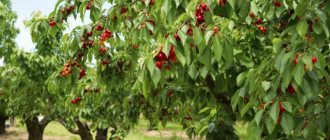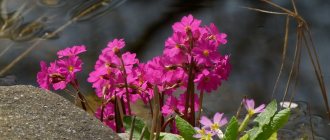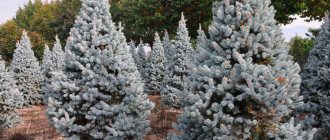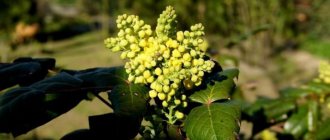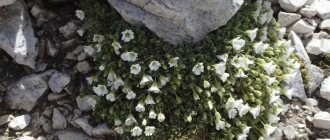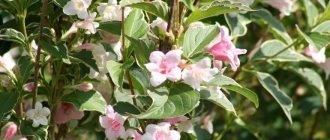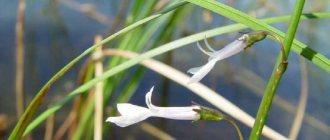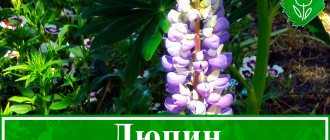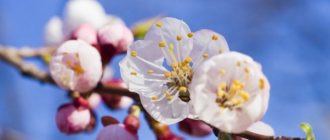Rowan (Sorbus) is a genus of woody plants of the Apple tribe, which is a member of the Rosaceae family. According to information taken from various sources, this genus includes 80–100 species. Red or common rowan (Sorbus aucuparia) is a fruit tree and a species of the genus Rowan; it is widespread throughout almost the entire territory of Europe, the Caucasus and Western Asia. This species has a wide range that even reaches the Far North. In the mountains, red rowan grows in the form of bushes, and they rise to the border of vegetation. The scientific name of the genus “sorbus” comes from the Celtic language, it means “bitter, tart”, this is due to the taste of the berries. The species name comes from a Latin word that translates to “bird” and “to catch.” The fact is that birds love to eat the berries of this plant, so people used them as bait.
Such a tree was part of the culture of the Scandinavians, Slavs and Celts. They believed that rowan had magical powers. So, this plant helped warriors in battles, and also provided protection from witchcraft and from the world of the dead. If you look at the fruit of this plant from below, it will be similar to one of the very ancient pagan symbols of protection - a five-pointed equilateral star. During the wedding, the leaves of the rowan tree were placed in the shoes of the newlyweds. Its wood was used to create walking staffs. Such a plant was planted near the house, and if it was destroyed or damaged, it was an extremely bad omen.
Features of the rowan tree
Common rowan is a shrub or tree whose height does not exceed 12 meters. The shape of the crown is round, there is pubescence on the surface of the red-gray stems. In mature trees, the bark is smooth and glossy, it has a brown-gray or gray-yellow color. The odd-pinnate, alternately arranged leaf plates are about 20 centimeters long, they consist of 7 to 15 pointed elongated leaves with a jagged edge, their front surface is matte, green, and the back surface is painted in a lighter shade and has pubescence. In autumn, the foliage changes its color to red and golden shades.
The terminal lush corymbose inflorescences have a diameter of about 10 centimeters, they consist of a large number of white flowers that have an unpleasant aroma. The fruit is a juicy apple of red-orange color, the diameter of which reaches 10 mm. This tree blooms in May–June. The berries fully ripen in the last weeks of summer or the first weeks of autumn.
When planting, it should be taken into account that such a crop reacts extremely negatively to smoke and air pollution, as well as to swampiness and stagnation of water in the soil.
The wood of the mountain ash tree is distinguished by its elasticity and hardness; it is very easy to process. In ancient times it was used to make runes and spindles. The berries of this crop are used to make fabric dyes.
Mountain ash
Pomegranate rowan
The variety was obtained by crossing the classic variety of rowan and hawthorn. The average height of the trees is about 4 m. The presented variety has good frost resistance. The plant also has excellent immunity to many diseases.
In order to get a good harvest, the tree should be planted in a sunny area. The leaves are small in size, pointed at the edges. Rowan fruits are round in shape with a bright burgundy hue. The weight of each berry does not exceed 2 grams. The fruits have a sweet and sour taste and a tart aftertaste. The pulp is yellow in color.
Pomegranate rowan lives for 30 years.
Planting rowan in open ground
Since the rowan tree is quite tall, it is recommended to plant it on the border of the garden, in which case it will not cause shading of the area. Nutritious soil (light or medium loam, which retains water well) is best suited, but rowan can also be grown on less fertile soil. It is recommended to plant in the spring before sap flow begins, or in the fall during leaf fall. In order to reap a good harvest, it is recommended to plant several plants of different varieties on the site at once.
When purchasing seedlings, you should carefully inspect their root system, pay attention to the fact that it must be completely healthy and well developed. A developed root system has 2 or 3 branches, which reach a length of more than 0.2 m. It is not recommended to purchase a seedling with dried and weathered roots. Inspect the bark; it should not be wrinkled, but rather smooth. Break off a small piece of bark from the plant; if the inside is brown, the seedling may be dead. In a normal living plant it will have a green color. Before planting, the plant should be prepared; to do this, it is necessary to cut out all injured, dried out and disease-damaged stems and roots. If rowan is planted in the fall, then all the leaf plates are torn off its branches, while trying not to injure the buds located in the axils.
A distance of 4 to 6 meters should be maintained between seedlings, and the same distance should be from rowan to other trees in the garden. The diameter and depth of the hole can vary from 0.6 to 0.8 m. Before planting, prepare a soil mixture, which should consist of 5 kilograms of topsoil and peat compost, 200 grams of superphosphate, 2-3 shovels of rotted manure and 100 grams of wood ash . Mix everything well. Fill the pit 1/3 of the way with this soil mixture, then half of it needs to be filled with plain soil. Then 10 liters of water are poured into the pit. Wait until the liquid is completely absorbed into the soil.
The root system of the plant must be dipped in a clay mash, then it is immediately placed in the center of the pit, which is filled with soil from the top layer or the remains of the soil mixture. When the plant is planted, the surface of the soil around it must be compacted, then it is well watered. The tree should be planted 20–30 mm deeper than it was grown in the nursery. After the liquid after watering is completely absorbed into the tree trunk circle, its surface must be covered with a layer of mulch (peat, grass, sawdust, humus, hay, straw or other organic material), the thickness of which can vary from 5 to 10 centimeters.
Planting a rowan seedling
Rowan alder
Sorbus alnifolia (Siebold & Zucc.) K. Koch
It freezes slightly in Siberia, especially in unfavorable winters. When sown in winter, it sprouted in both the first and second years in approximately equal quantities, abundantly.
PK83 Rowan alnifolia Sorbus alnifolia (Siebold & Zucc.) K. Koch
PK83 Rowan alnifolia Sorbus alnifolia (Siebold & Zucc.) K. Koch
Among other seedlings it grew quite quickly, contrary to expectations.
PK83-18 Rowan alder in August of the first year
In September I dyed it in a timely manner.
PK83-18 Rowan alder in the fall of the first year
In the second year:
PK83 Rowan alder for the second summer
More…
Rowan care
There is nothing unusual about growing rowan. For normal growth and development of the plant, it must be watered, weeded, loosened the soil surface, pruned, fed and treated to combat pests and diseases in a timely manner.
Such a tree only needs watering during prolonged drought. It should be taken into account that the plant needs mandatory watering at the very beginning of the growing season and after planting in open soil, and another 15–20 days before the harvest is harvested, and 2–3 weeks after that. It is recommended to make grooves around the perimeter of the tree trunk circle into which water flows during watering. For one watering, 20 to 30 liters of water are taken per tree, while the final volume of liquid used depends on the condition and composition of the soil, as well as on the age of the viburnum itself.
The surface of the tree trunk circle needs to be loosened at the beginning of the spring period, during the summer this procedure is carried out 2 to 3 times. And the surface of the tree trunk circle must be loosened after the entire crop has been harvested. The easiest way to loosen the soil is the day after rain or watering. During loosening, you need to pull out all the weeds. When the tree trunk circle is loosened, its surface must be covered again with a layer of mulch.
In order for rowan to be more productive, it will need systemic feeding. Starting from the third year of growth, humus or compost - from 5 to 8 kilograms and ammonium nitrate - 50 grams are added to the soil under the plant. At the beginning of June, 1 bucket of bird droppings solution (1:10) or mullein (1:5) should be poured under the tree. Instead of organic fertilizer, you can use Agrolife solution. In the last summer weeks, 100 grams of superphosphate and 500 milligrams of wood ash must be added to the tree trunk circle.
Pruning is carried out at the very beginning of the spring period before the buds awaken. It is necessary to cut out all dried, diseased shoots growing inside the crown, as well as those that extend at a right angle. Those varieties that bear fruit on last year's stems will need thinning and slight shortening of the branches. If fruiting is observed on various types of fruit formations, then such trees will need periodic thinning and rejuvenation of the ringlets, as well as shortening of the skeletal branches.
The most important goal of pruning rowan is to provide better and more uniform illumination of its crown; this has an extremely positive effect on the yield of the plant. Due to the fact that such a tree has a pyramidal crown shape, the branches grow at an acute angle to the trunk, which makes them more fragile. When forming skeletal branches, you must try to ensure that they are drawn at an obtuse or right angle.
If the plant shows weak growth, it will need anti-aging pruning. It is done on two- or three-year-old wood, as a result of which the growth of new shoots is activated.
Diseases and pests
In May or June, you need to carefully examine the rowan tree, because it is at this time that the first symptoms of the disease or damage by harmful insects may appear. This plant is susceptible to the following diseases: anthracnose, septoria, brown and gray spot, powdery mildew, monoliosis, scab, rust, necrosis (black, nectria and cytospore) and viral ring mosaic. If the plant was planted completely healthy, and all the rules of agricultural technology for the crop were followed when planting and caring for it, then the mountain ash may never get sick at all. The fact is that only weakened trees are susceptible to diseases. However, no matter what, it is necessary to periodically inspect the mountain ash so that, if necessary, treatment can be started in a timely manner.
Any type of necrosis, as well as mosaic, are incurable diseases. In this regard, we must try to prevent the tree from getting sick with them at all, and for this it is necessary to carry out a number of preventive measures. It is necessary to take a very responsible approach to the choice of planting material; the site will need pre-sowing preparation, the purpose of which is to destroy pathogens. Also, when pests that carry viruses appear, it is necessary to get rid of them as quickly as possible, and it is also very important that the tree trunk area is always clean. Do not forget to periodically inspect the rowan tree, because any disease is easier to cure at the initial stage of development.
Rowan is affected by the same diseases as other crops of the Rosaceae family (apple trees, plums, pears). At the same time, the symptoms of the diseases and methods of treatment are the same.
About 60 species of mites and other harmful insects can settle on the mountain ash, which injure the stems, berries, seeds, leaf blades, flowers and buds of the tree. Most of these pests can settle on various fruit crops of the Rosaceae family. Most often the following settle on the rowan tree:
- Weevils . To destroy them, use Karbofos.
- Bark beetles . To get rid of them, the plant should be sprayed with Confidor, Aktara and Lepidocide.
- Moths . To exterminate these pests, Karbofos, Chlorophos or Cyanox are used.
- Rowan gall mites . When they appear, the tree is sprayed with colloidal sulfur.
- Rowan moths . They are destroyed with Chlorophos.
- Green apple aphid . To destroy it, use Decis or Actellik.
- Scale insects . You can get rid of them if you spray the rowan with preparation 30 plus.
- Apple fruit sawflies . In order to exterminate them, use an infusion of white mustard. To prepare it, you need to combine 1 liter of water and 10 grams of mustard powder, mix everything and leave for 24 hours. Before use, the infusion should be diluted with water in a ratio of 1:5.
In order to prevent pests, the tree must be sprayed on the foliage before sap flow begins; for this, a solution of copper sulfate is used (100 grams per 1 bucket of water). Spraying rowan and the surface of the tree trunk circle with Nitrafen, which is carried out in the spring, is also quite effective. Also, for the purpose of prevention in the fall, it is necessary to rake all the foliage from the area and destroy it, while digging up the soil in the tree trunk circles.
Yellow rowan
Next we will look at the most popular representatives of yellow varieties. The red or orange color of the rowan fruit is the most receptive to everyone. There should be no other way, almost everyone who is superficially familiar with such a culture thinks so. However, for experienced gardeners it is not uncommon to find varieties and species that bear fruits of white, yellowish and orange hue. We list the most popular representatives of the yellow variety.
-Yellow mountain ash - the difference lies in the particularly beautiful formation of the crown: the elongated branches gradually bend towards the ground part, this picture is very mesmerizing. The quality of the fruit is appreciated by chefs, who use the berries in the preparation of various delicacies. Especially often used for dessert masterpieces. A lot more can be prepared from the delicious fruits of yellow rowan: jam, delicious preserves, thirst-quenching kvass, and even marmalade.
-Ogonyok is a variety of rowan with orange fruits. Wonderful taste of berries. The shrub is an unpretentious plant. At the first stage of ripening, the fruits are colored yellow, and only at full maturity the color turns orange.
-Kubova's Daughter is considered the newest variety among the rest. The varietal feature is the color of the fruit, very bright, orange. Sweet, slightly sour, berry flavor. Another distinctive feature is the increased juiciness of the fruit. The disadvantages include low yield.
- pomegranate rowan - a variety developed by crossing the common rowan and hawthorn, known to everyone for its healing properties. The tree is of medium height, capable of growing up to only 4 meters. Excellent resistance to frosty winters, developed immunity to diseases and pests. These qualities are maintained even without special care. The only requirement of the tree is to plant it in a sunny area, the yield of this variety depends on this. Slightly sharp at the tips, small in size and light green in color of the leaves. The round fruits are endowed with a pronounced burgundy hue and weigh up to 2 grams. Sweet, sour taste, slightly tart aftertaste. The juicy pulp is yellow. This variety of rowan is considered a long-liver; it can delight you with its beauty for almost 30 years, bearing fruit for 25 years of them.
- Angri variety - resistance to cold winters and temperature changes during the season is considered the main feature of the variety, it adapts well to changing conditions, and the fruits ripen much earlier. The tree-shrub can grow from 2 to 4 meters. With jagged edges, unpaired shape, dark green leaves have a matte tint. Already in the last days of summer, the berries begin to fully ripen. The berries themselves have a bizarre, unusual shape, in the form of a cylinder. The fruits are small, only 1-1.5 grams. Diseases and pests do not pose a danger to the plant due to good immunity.
Rowan propagation
To propagate red rowan, vegetative and generative (seed) methods are used. Species rowan is most often grown from seeds. Seeds are sown in the autumn. To begin with, they are taken out of the fruits and washed from any remaining pulp, then they need to be buried 0.5–1 cm into the soil. The surface of the crops should be covered with a layer of mulch (dried fallen leaves) on top. If seed sowing is scheduled for spring, they will need stratification. To do this, they are combined with coarse sand in a ratio of (1:3), then the mixture must be kept at room temperature for 4–8 weeks, and then put on the refrigerator shelf intended for vegetables for 3–4 months. The emerging seedlings need systematic watering and weeding, as well as loosening the soil surface around them. Transplantation of seedlings into a schoolhouse is carried out in the autumn. A tree grown generatively begins to bear fruit at 4–5 years.
To propagate valuable varietal rowan, vegetative methods are used, for example: green and lignified cuttings, grafting, layering and shoots. As a rootstock for grafting a varietal cutting, it is recommended to take a seedling of rowan berry, common rowan or Moorava, grown from seed. Vaccination should be carried out in the first days of April, when sap flow begins, as well as in July or August. The bandage from the vaccination site must be removed after 20 days. The top of the rootstock should be trimmed, leaving a thorn. It is to this thorn that the growing varietal shoot needs to be tied.
If the rowan is rooted, then shoots can be used to propagate it. Green cuttings do not root very well, on average 4.5–6 cuttings out of 10. And lignified cuttings root even worse than green ones.
Red rowan (common)
Varieties of white rowan
Among the most common varieties are Cashmere, Quene and White Swan. It is worth taking a closer look at the features of each type.
White mountain ash Kashmir
Kashmir white rowan can grow in the middle zone, in the south of Russia, as well as in the regions of the North-West, but not in the Urals or Siberia. In harsh winters, young shoots freeze and die. In the natural environment it grows up to 10 m, in Russia – up to 4-5 m (it reaches this height after 20 years).
The crown is pyramidal, of medium diameter (3 m), the bark is gray with reddish hues, the leaves are paired. The fruits are large, diameter 10-12 mm. But they are inedible - they are too sour and bitter. The color is white, less often golden. The berries appear at the end of September.
Kashmiri white rowan berries resemble miniature apples
Rowan variety Kene
Kene is similar in appearance to an ordinary rowan, but is smaller in size (no more than 2 m in height), so it looks more elegant. It has average winter hardiness, so it can be grown in the Moscow region, the Black Earth Region and the southern regions of Russia.
It produces long shoots of paired small leaves - there can be from 17 to 33 on one branch. It blooms in May or early June for 1-2 weeks. The fruits are white, 7 mm in diameter - like peas. The berries are edible, but very sour, although they do not give a bitter taste.
White rowan Kene is distinguished not only by its beautiful berries, but also by its graceful leaves.
Rowan White Swan
White Swan is a hybrid variety based on Arnold's mountain ash. This is a fairly large tree, growing up to 7 m in height. It has a compact crown (1.5-2.5 m in diameter). It is successfully grown in the climatic conditions of the Moscow region.
It has oval leaves with serrated edges. In summer they have a rich green color, and in autumn they turn red-orange. The fruits are spherical, with an average diameter of 8-10 mm, and grow in small clusters.
The fruits of the White Swan rowan are inedible due to their bitter taste, but have great decorative value.
Types and varieties of rowan with photos and descriptions
Gardeners cultivate most types of rowan. Most of these species are fruit-bearing, but there are also decorative ones.
Elderberry (Sorbus sambucifolia)
Under natural conditions, this species is found in Japan and the Khabarovsk Territory, as well as in Sakhalin, Kamchatka and the Kuril Islands. This spectacular shrub reaches a height of 250 cm. The not very dense crown can be round or ovoid. Straight bare stems of dark brown color have a bluish coating on the surface, gray branches with clearly visible lenticels. The odd-pinnate leaf blades reach 18 centimeters in length and have lanceolate-shaped stipules. The leaf plates include from 7 to 15 sharply serrated leaves, oval in shape and dark green in color, they are glossy and almost bare, located on light red petioles. Complex corymbose inflorescences consist of flowers with a diameter of about 15 mm and a white or pale red color. On the surface of the branches and peduncles there is pubescence of a light red color. The edible berries are juicy, deep red in color and spherical in shape; they have a fifteen-millimeter diameter and a sweet and sour taste. They are also not bitter and have a very pleasant smell. The fruits may not fall from the branches until spring. This plant is undemanding to the soil and is resistant to drought and frost.
Rowan glogovina (Sorbus torminalis), or medicinal bereka
In the wild, this species can be found in the Crimea, Western Europe, the Caucasus, the southwestern part of Ukraine and Asia Minor. This rowan tree does not grow in very large groups or singly. This tree can reach 25 meters in height. Its trunk is covered with dark gray bark with longitudinal cracks. On young shoots the bark is olive-colored. Simple broadly ovate leaf plates reach 18 centimeters in length, are heart-shaped and rounded at the base, they are also pointed, and there are from 3 to 5 lobes at the apex. The front surface of the leaves is dark green glossy, and the underside is hairy-pubescent. In autumn, the color of the foliage changes to yellow or orange. Loose corymbose inflorescences, reaching a diameter of 8 centimeters, consist of small (about 10 mm in diameter) white flowers. The round berries, reaching a diameter of 1.8 cm, have a pale red or orange color, which gradually changes to brown. The mealy pulp has a sweet-sour taste. This species is highly resistant to frost, but is not drought-resistant. There are 2 decorative forms:
- with pubescent foliage;
- with pinnately dissected leaf blades.
Rowan (Sorbus domestica), or large-fruited rowan (Crimean)
Under natural conditions, this species is found in the southern part of Western Europe and in the Crimea; it prefers to grow in the undergrowth of deciduous forests singly or in groups. This plant is characterized by slow growth and reaches a height of 15 meters. The crown shape is wide-pyramidal or spherical. The bark covering the trunk is already cracked in a young plant. But the stems are almost bare, smooth and glossy. The composition of the odd-pinnate complex leaf plates, reaching a length of 18 centimeters, includes smooth, glossy, sharply serrate, lanceolate-shaped leaves, colored green and about 50 mm long. Widely pyramidal, branched, tomentose-pubescent inflorescences, having a diameter of about 10 centimeters, consist of flowers reaching 15 mm in diameter and painted white or pale pink. The oblong-ovate or pear-shaped berries, up to 30 mm in diameter, can be colored yellow-green, red or brown, and have a mealy, fragrant, slightly sweet astringent pulp, which includes many stony cells. This plant is resistant to pests, drought and frost. There are 2 forms:
- pear-shaped;
- apple-shaped.
Round-leaved rowan (Sorbus aria), or aria, or mealy rowan
In nature, this species is found in the Carpathians and in the mountains of Central and Southern Europe. The height of such a vigorous tree is about 12 meters. The crown shape is wide-pyramidal. The trunk is covered with brownish-red or brownish bark; the surface of the stems has felt pubescence. Leathery, whole leaf blades are rounded-elliptical in shape and have a sharp, double-serrate edge. During opening, the foliage is white-tomentose, then the front surface of the leaves turns green. In autumn, the color of the foliage changes to various shades of bronze color, because of this, rowan begins to resemble alder in appearance. The scutes, up to 8 centimeters in diameter, consist of white flowers. The edible berries are spherical in shape and reach 15 mm in diameter; they are colored red-orange or pink-orange. The sweet-sour mealy pulp is not as tasty as that of sweet-fruited varieties. Cultivated since 1880. There are several garden forms:
- Decaysne . Flowers and leaf blades of this shape are larger.
- Edible . The shape of the leaf plates is elliptical or oblong. The berries of this plant are somewhat larger than those of the main species.
- Chrysophyll . Throughout the season, the foliage is pale yellow. In autumn it turns buttery yellow.
- Manifika . During opening, the leaf blades are snow-white; in the summer, their front surface becomes green. In autumn, their color changes to bronze. Red berries on the surface have pubescence in the form of white pile.
- Majestic . The height of such a plant is about 15 meters. It does not form berries.
Hybrid rowan (Sorbus x hybrida)
This plant is a natural hybrid of intermediate rowan and red rowan. Under natural conditions, this species can be found in Northern Europe. Complex leaf blades combine simple pinnate and lobed leaves. The front surface of the foliage is green and bare, and the underside has pale gray or whitish pubescence. Gardeners grow only one more hybrid - the Thuringian variety, which was obtained by crossing round-leaved mountain ash and red mountain ash. In this tree, compared to the hybrid rowan, the blades on the leaf blades are not cut as much, but they are more blunt and wider.
Rowan (red)
A detailed description of this type can be found at the beginning of the article. It has a large number of decorative forms that differ in the color of the berries, the shape of the crown and the color of the foliage, for example: Burka, liqueur, pomegranate, Michurin dessert, Russian, pyramidal, weeping, Beisner, Nevezhinskaya, Moravian, or sweet, Fifeana, etc. All these forms retain their spectacular appearance throughout the entire growing season. Particular attention should be paid to the following forms:
- Nevezhinskaya . Externally, this variety and the main type are very similar. These plants are distinguished by the fact that the berries of Nevezhinsky rowan do not have bitterness and astringency, even when unripe, when in the main species the fruits can be eaten only after the first frosts have passed.
- Moravian or sweet rowan . Found naturally in the Sudeten Mountains. The leaf blades are more delicate compared to other varieties, and the flowering of this rowan begins a little later. The inflorescences can sometimes contain about 150 flowers. Red scarlet berries have juicy orange pulp and a sweet-sour taste.
- Liqueur . This variety was born thanks to Michurin, for this he crossed chokeberry and red rowan. The color of the berries is black and purple. This rowan has very high frost resistance.
- Pomegranate . The variety was born as a result of crossing large-fruited hawthorn and red rowan in 1925. The height of such a tree is about 400 cm. Smooth glossy simple leaf blades are about 17 centimeters long. In the upper part the leaves are whole, elliptical or ovoid, and in the lower part they are pinnately dissected. Burgundy sweet and sour berries are the same size as cherries. The species has very high frost resistance.
- Burka . It was born in 1918 by crossing red rowan and alpine rowan. The dark green simple leaf blades are pinnately dissected and have slight pubescence. The oblong brown-red berries are medium in size. Rowan remains very beautiful throughout the season.
- Michurinskaya dessert . This is a hybrid between mountain ash and medlar. The height of the tree is only 300 cm, the crown is wide. The odd-pinnate complex leaf plates reach 18 centimeters in length; they consist of 6 or 7 pairs of greenish leaves, the underside of which is slightly pubescent. Medium-sized dark red berries with a shape very similar to medlar fruits. The tree is highly decorative and frost-resistant.
Gardeners also grow such varieties of rowan as: mixed, intermediate, or Swedish, alder, Köhne, Vilmorena, Amur and some others.
The best varieties of red rowan
- Bead . The plant is medium-sized. The berries are juicy and have a taste similar to cranberries.
- Wefed . The sweet-fruited variety is characterized by high yield and frost resistance. The purpose of this variety is table and dessert. The pink-yellow fruits are very impressive.
- Solar . The variety is consistently fruitful. The rich orange berries with a red blush are very tasty, fresh and crushed with granulated sugar.
- Sorbinka . The variety is characterized by productivity and frost resistance. The berries are red and large, they can be eaten fresh or used for processing.
Also very popular are varieties of red rowan, such as: Kirsten Pink, Red Tip, Carpet of Gold, White Max, Shimi Glow, Leonard Springer, Fastigiata, Integerrima, Germins, Titan, etc.
Yellow varieties
We are all accustomed to the fact that if there is a mountain ash, then it should only have a red color. There are actually species that produce yellow, white and orange berries.
Popular varieties:
- Yellow rowan. It is distinguished by its long branches that bewitchingly bend towards the ground. Its fruits are very famous in cooking. All over the world, berries are used to prepare many desserts. Also, kvass is made from yellow rowan, marmalade, jam, and preserves are made.
- Ogonyok. This is an orange variety that is famous for its high taste. The plant is distinguished by its unpretentiousness. Green berries turn yellow, but as they ripen they turn orange.
- Rowan, Daughter of Kubova. This is the newest type. A distinctive feature of this tree is the color of the fruit. They have a bright orange hue and a pleasant sweet and sour taste. Compared to other varieties, Kubovaya Daughter has quite juicy fruits. However, the tree does not have good yield.
Rowan in landscape design
The rowan tree in landscape design can play a secondary or major role. Arbors and arches are decorated with weeping rowan; it is also planted on a lawn or edge away from other trees, as a solo plant.
This plant looks great in a group with other shrubs and trees, for example, with wildflower, spirea, snowberry or barberry. Rowan also goes well with coniferous crops (arborvitae, pine, fir or spruce). Especially in the fall, when variegated rowan looks very impressive against a bluish or green background of coniferous trees.
This plant can also be planted together with deciduous trees: linden, black poplar, maple, ash and white willow. Most types of rowan are able to emphasize the effectiveness of viburnum, mountain ash, honeysuckle and rugose rose. You can create a hedge from shrubby rowan, against which perennial flowers will look great. When choosing a place to plant such a crop, one should not forget that it reacts extremely negatively to the polluted and smoky air that is inherent in cities.
Rowan trees in the garden. Review of species and varieties.
Application in design
You can use white rowan to decorate your garden in any available way:
- Since the tree grows large (2-3 m in height), it can be planted in front of a window, along a fence, or along the borders of a garden. It is used both in single planting and in group planting (in rows).
- White rowan goes well with the more familiar red and yellow varieties.
- Compositions with viburnum, barberry, wrinkled rose, and honeysuckle look good.
- The tree can be used as a background for herbaceous perennials (for example, oak anemone, large-leaved bergenia, creeping speedwell, marsh marigold).
- White rowan is often used in compositions with hostas, tenacious, and fescue. In such mixborders it is placed behind.
- The tree looks good next to fir, spruce, and pine trees - in this case, it is better to place the rowan in front.
In autumn, white rowan looks especially attractive thanks to its berries and leaves.
Properties of rowan: harm and benefit
Useful properties of rowan
Red rowan berries contain a lot of vitamin C, it contains even more than lemons. The berries also contain vitamins P, B2, PP, K and E, as well as provitamin A, glycosides, amino acids, pectins, bitterness, tannins, organic acids (succinic, citric and malic), flavonoids, iodine, potassium, magnesium, iron , copper, manganese, zinc, alcohols, essential oil and phytoncides. Such berries are distinguished by diaphoretic, hemostatic, choleretic and diuretic effects. In Norway, this plant is used as a wound-healing and decongestant; in Hungary, it is used to treat dysentery; in Bulgaria, the berries are used to remove kidney stones.
Since the berries contain many vitamins, they are used to improve the condition of the body in case of diabetes, kidney and liver diseases, anemia, hemorrhoids, diseases of the digestive system, especially gastritis, colitis and peptic ulcers.
Rowan juice helps stimulate appetite, so it is recommended to use it for rheumatic pain, exhaustion, kidney stones and bladder stones. This juice has the ability to eliminate swelling, normalize metabolism, reduce cholesterol levels in the blood, stop bleeding and have an antimicrobial effect. The juice is also indicated for use in cases of gout, atherosclerosis, asthenia, capillary fragility, hypertension, arrhythmia, bleeding and malignant tumors, as well as carbon monoxide poisoning.
The flowers, bark, leaf blades and berries of the rowan tree have healing properties. Hypertension is treated with a decoction of the bark; for scurvy, it is recommended to take a drug from the leaves, since they contain a lot of vitamin C (more than berries). Preparations from flowers and berries are used for diseases of the gastrointestinal tract, metabolic disorders and colds.
This plant can also be used externally for wounds, various inflammations, burns and warts.
In the confectionery industry, rowan berries, which are a multivitamin, are used as a raw material. They are used for the production of sweets, liqueurs, vodka, liqueurs and tinctures, jam, marmalade, jelly, marshmallows, preserves and soft drinks.
A rich decoction of rowan berries is used in veterinary medicine to treat pulmonary diseases in animals.
To improve health in the morning, it is recommended to drink a drink made from rowan, which has tonic properties. In the evening, pour one large spoonful of fresh or dried rowan berries, barberries and rosehips into a 3-liter thermos. It is filled with freshly boiled water and closed tightly. This tea should be drunk from morning until lunch, then boiling water is poured into the thermos again, wait until the drink brews, and drink again. When the second drink is finished, take out the berries, crush them thoroughly and put them back into a thermos filled with freshly boiled water. You can use one serving of berries 3 times.
USEFUL PROPERTIES OF RED ROWAN BERRY. USE OF ROWAN BERRY FOR MEDICAL PURPOSES.
Medicinal properties of rowan fruits
Mountain ash is a tree whose berries are effectively used in the treatment of many human diseases. Our ancestors knew about the medicinal qualities of these bright berries.
The berries accumulate many valuable vitamins (mostly C, E, P, K). Also, the fruit pulp contains a lot of fructose, sorbic acid and carotene, and the skin also contains tannins.
- Extracts from rowan berries help with problems with the kidneys, liver and cardiovascular system.
- Freshly squeezed juice is good for hemorrhoids, gastritis and low stomach acidity.
- Sorbic acid is recognized as effective in the fight against staphylococcus. For this reason, the fruits are used as preservatives for some food products.
- When transporting water, our distant ancestors threw bunches of rowan berries into it; this gave the water a good taste and did not spoil for a long time.
The steam from a freshly brewed infusion of berries helps cure coughs or other problems with the respiratory system.
Features of reproduction
White rowan can be propagated:
- seeds - they are collected and sown in the fall, and in large quantities, since germination is low;
- using green cuttings - they are obtained in early summer;
- cuttings - in the autumn;
- grafting a dormant bud (in summer).
The simplest and most effective way is cuttings. This is how varietal trees are propagated to obtain an exact copy of the mother plant. Species white rowan can be grown from seeds - this is a more labor-intensive method. The new plant will have its own characteristics, which do not always coincide with those of the parent tree.
The varieties Kene and Kashmir are usually propagated by seeds.
